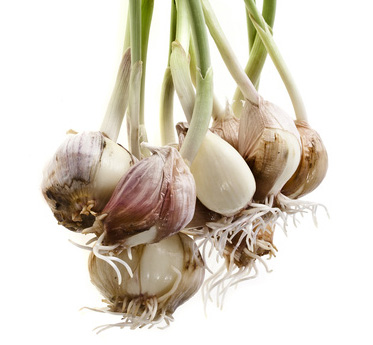Garlic is one of the easiest vegetables of all to grow successfully. It stores well, provides zest to your meals all year long, is forgiving as to when you plant it and one purchase lasts a lifetime.
Last fall got very busy, with travel, classes and life in general. One day in early December, I noticed our garlic in our garage – and we had far too much of it. I had forgotten to plant any in late September or early October, when you are supposed to.
The ground wasn’t yet frozen, so I went outside and planted the amount my wife and I usually do. This July, we harvested some of our best garlic ever.
I use German hardneck garlic because it is what was recommended when I first started planting it a dozen years ago, and it does very well in Maine.
Select a part of your garden where you did not plant alliums (anything in the onion family) this year. Work in a lot of compost and add a little organic fertilizer.
I always save the largest garlic bulbs for planting. Divide the bulbs into cloves, and plant the cloves about 4 inches deep and 6 inches apart, keeping the flat side of the cloves down. Cover the cloves with soil and add a little mulch at planting time, and a bit more once the ground has frozen. Carefully mark where you planted the garlic so you won’t put anything else there come spring. If you have them, pine needles are the best mulch but chopped leaves also work.
When the ground thaws in the spring, you remove the mulch, cut off the garlic scapes when they appear, usually in June (they are delicious to eat), and dig up the garlic bulbs around late July, when the leaves just start going brown. Dry the garlic in a shed or garage for about a week – and begin the process all over.
Send questions/comments to the editors.



Success. Please wait for the page to reload. If the page does not reload within 5 seconds, please refresh the page.
Enter your email and password to access comments.
Hi, to comment on stories you must . This profile is in addition to your subscription and website login.
Already have a commenting profile? .
Invalid username/password.
Please check your email to confirm and complete your registration.
Only subscribers are eligible to post comments. Please subscribe or login first for digital access. Here’s why.
Use the form below to reset your password. When you've submitted your account email, we will send an email with a reset code.